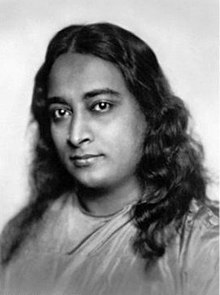imported>Anthony.Sebastian |
imported>John Stephenson |
| (146 intermediate revisions by 5 users not shown) |
| Line 1: |
Line 1: |
| == '''[[Volatility (chemistry)]]''' ==
| | {{:{{FeaturedArticleTitle}}}} |
| ''by [[User:Milton Beychok|Milton Beychok]] (and [[User:Anthony.Sebastian|Anthony.Sebastian]])
| | <small> |
| | | ==Footnotes== |
| ----
| |
| {{Image|Vapor Pressure Chart2.png|right|250px|Example vapor pressure graphs of various liquids.}} | |
| | |
| In [[chemistry]] and [[physics]], '''volatility''' is a term used to characterize the tendency of a substance to vaporize.<ref>'''Note:''' To vaporize means to become a [[vapor]], the gaseous state of the substance.</ref> It is directly related to a substance' s [[vapor pressure]]. At a given [[temperature]], a substance with a higher vapor pressure will vaporize more readily than a substance with a lower vapor pressure.<ref>[http://www.bae.uky.edu/~snokes/BAE549thermo/gasesvapor.htm Gases and Vapor] ([[University of Kentucky]] website)</ref><ref>{{cite book|author=James G. Speight|title=The Chemistry and Technology of Petroleum|edition=4th Edition|publisher=CRC Press|date=2006|isbn=0-8493-9067-2}}</ref><ref name=Kister>{{cite book|author=Kister, Henry Z.|title=[[Distillation Design]]|edition=1st Edition|publisher=McGraw-Hill|year=1992|isbn=0-07-034909-6}}</ref> In other words, at a given temperature, the more volatile the substance the higher will be the pressure of the vapor in dynamic equilibrium with its vaporizing substance—i.e., when the rates at which molecules escape from and return into the vaporizing substance are equal.
| |
| | |
| In common usage, the term applies primarily to [[liquid]]s. However, it may also be used to characterize the process of [[Sublimation (chemistry)|sublimation]] by which certain [[solid]] substances such as [[ammonium chloride]] (NH<sub>4</sub>Cl) and [[dry ice]], which is solid [[carbon dioxide]] (CO<sub>2</sub>), change directly from their solid form to a vapor without becoming a liquid.
| |
| | |
| Any substance with a significant vapor pressure at temperatures of about 20 to 25 °[[Celsius (unit)|C]] (68 to 77 °[[Fahrenheit (unit)|F]]) is very often referred to as being ''volatile''.
| |
| | |
| === Vapor pressure, temperature and boiling point ===
| |
| | |
| The vapor pressure of a substance is the pressure at which its gaseous (vapor) phase is in equilibrium with its liquid or solid phase. It is a measure of the tendency of [[molecule]]s and [[atom]]s to escape from a liquid or solid.
| |
| | |
| At [[atmospheric pressure]]s, when a liquid's vapor pressure increases with increasing temperatures to the point at which it equals the atmospheric pressure, the liquid has reached its [[boiling point]], namely, the temperature at which the liquid changes its state from a liquid to a gas throughout its bulk. That temperature is very commonly referred to as the liquid's ''normal boiling point''.
| |
| | |
| Not surprisingly, a liquid's normal boiling point will be at a lower temperature the greater is the tendency of its molecules to escape from the liquid, namely, the higher is its vapor pressure. In other words, the higher is the vapor pressure of a liquid, the higher is the volatility and the lower is the normal boiling point of the liquid. The adjacent vapor pressure chart graphs the dependency of vapor pressure upon temperature for a variety of liquids<ref name=Perry>{{cite book|author=R.H. Perry and D.W. Green (Editors)|title=Perry's Chemical Engineers' Handbook | edition=7th Edition|publisher=McGraw-Hill|year=1997|id=ISBN 0-07-049842-5}}</ref> and also confirms that liquids with higher vapor pressures have lower normal boiling points.
| |
| | |
| | |
| ''[[Volatility (chemistry)|.... (read more)]]''
| |
| | |
| {| class="wikitable collapsible collapsed" style="width: 90%; float: center; margin: 0.5em 1em 0.8em 0px;"
| |
| |-
| |
| ! style="text-align: center;" | [[Volatility (chemistry)#References|notes]]
| |
| |-
| |
| |
| |
| {{reflist|2}} | | {{reflist|2}} |
| |}
| | </small> |
Latest revision as of 09:19, 11 September 2020

Paramhansa Yogananda circa 1920.
Paramhansa Yogananda (5 Jan 1893–7 Mar 1952) was one of the first Indian teachers from the Hindu spiritual tradition to reside permanently in the West, and in particular, he was the first to teach yoga to Americans. He emphasized the universality of the great religions, and ceaselessly taught that all religions, especially Hinduism and Christianity, were essentially the same in their essence. The primary message of Yogananda was to practice the scientific technique of kriya yoga to be released from all human suffering.
He emigrated from India to the United States in 1920 and eventually founded the Self-Realization Fellowship there in Los Angeles, California. He published his own life story in a book called Autobiography of a Yogi, first published in 1946. In the book, Yogananda provided some details of his personal life, an introduction to yoga, meditation, and philosophy, and accounts of his world travels and encounters with a wide variety of saints and colorful personalities, including Therese Neumann, Mohandas K. Gandhi, Luther Burbank, and Jagadis C. Bose.
Paramhamsa, also spelled Paramahamsa, is a Sanskrit title used for Hindu spiritual teachers who have become enlightened. The title of Paramhansa originates from the legend of the swan. The swan (hansa) is said to have a mythical ability to sip only the milk from a water-and-milk mixture, separating out the more watery part. The spiritual master is likewise said to be able to live in a world like a supreme (param) swan, and only see the divine, instead of all the evil mixed in there too, which the worldly person sees.
Yogananda is considered by his followers and many religious scholars to be a modern avatar.
In 1946, Yogananda published his Autobiography of a Yogi. It has since been translated into 45 languages, and in 1999 was designated one of the "100 Most Important Spiritual Books of the 20th Century" by a panel of spiritual authors convened by Philip Zaleski and HarperCollins publishers.
Awake: The Life of Yogananda is a 2014 documentary about Paramhansa Yogananda, in English with subtitles in seventeen languages. The documentary includes commentary by George Harrison and Ravi Shankar, among others.[1][2]
